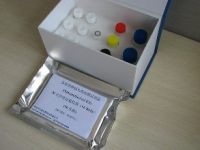Isolation of Viruses from High Temperature Environments
互联网
492
The detection and isolation of viruses directly from high temperature (>80 C) acidic (pH<4) hot springs, fumaroles, and soils has long been challenging. These extreme environments tend to have a low biomass (typically <106 cells/ml) and low free viral abundance (103 -106 particles/ml) compared to eutrophic freshwater lakes (1 ) or near- shore marine environments (2 ). Establishing laboratory cultures from these environments pose challenges due to the extreme and poorly defined growth conditions that must be mimicked in the laboratory. Likewise, culture-independent approaches for isolation of viruses are problematic because of our rudimentary knowledge of viral diversity in these environments and the lack of universally conserved signatures that can be used for virus detection and isolation. Here we discuss both culture-based and culture-independent techniques for detection and isolation of viruses from acidic thermal features.









